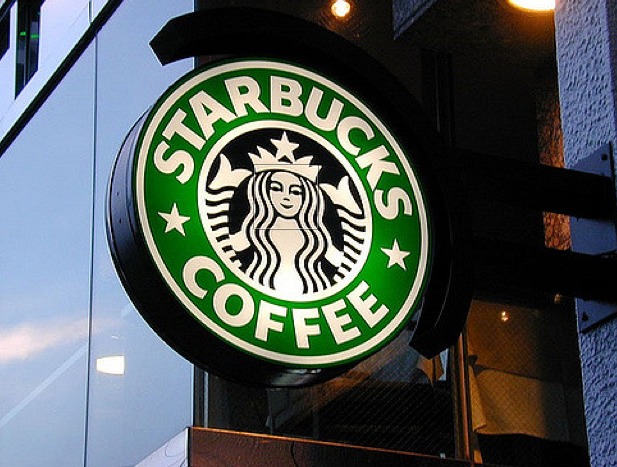Most forecasts are calling for an improving U.S. economy. According to the most recent estimates, U.S. GDP increased 2.7% during 2013, compared with a 2% rise during 2012.
In early January, the government reported a drop in December’s unemployment rate to 6.7%. In another positive sign, Congress struck a two year budget deal—heading off another disruptive government shutdown.
The Federal Reserve signaled some optimism by taking an initial step to reduce its signature bond-buying program (beginning to “taper”). The International Monetary Fund (IMF) also weighed in—increasing its estimate for US economic growth for 2014 to 2.5%.
Employment—Falling
November’s job report estimated 203,000 new jobs, following October’s increase of 200,000. This hinted at better economic growth in 2014. December’s report (reflecting only 74,000 new jobs) calls into question whether the positive jobs trend will continue. The latest report from the Bureau of Labor statistics also showed the unemployment rate dropping to 6.7% but this is largely the result of discouraged workers leaving the labor force—the opposite of what we expect from a healthy labor market.
The graphic below shows the volatility of the unemployment rate over the last 50 years. While unemployment is clearly declining, the jobs created in this recovery so far have been overwhelmingly in service industries. These are business sectors (retail, food service, healthcare) where wages are lower and jobs are more frequently part-time.
U.S. Housing—Getting Better
Despite rising U.S. mortgage rates, housing starts jumped 22.7% in November—to an annualized rate of 1.09 million. This exceeded virtually all economic forecasts and represents the highest level of new home starts since February 2008 (according to the U.S. Commerce Department). Permits for future projects were also near a five-year high, suggesting this pickup may well be sustained into 2014.
U.S. home prices were on track to end 2013 up an impressive 11%. Economists are expecting a lower average rise of 4% in 2014 (given higher average mortgage interest rates). Housing prices rose in almost all markets across the country in 2013. In many cases, cities that had been especially hard hit saw some of the best price improvement. Despite these recent gains, prices in most regions remain below previous peaks, with many homeowners still “under water.”
U.S. Growth Continues, but the Pace Slows a Bit
The American economy continues to expand at a modest pace. Business activity expanded at a lower rate than in recent months. According to the Institute for Supply Management (ISM) new orders contracted. The ISM index fell to 53 last month from 53.9 in November. This is its lowest reading since June 2013 but still represents the 48th consecutive month of growth in the index. The Purchasing Managers Index eased slightly from the previous month, slipping by 0.2 point to 55.7. For both surveys, a reading above 50 indicates expansion.
American consumers turned more confident in December. The year-end Thomson Reuters/University of Michigan index of consumer sentiment climbed to 82.5 from 75.1 in November, putting it at a five-month high. Higher positive sentiment readings tend to correlate with higher consumer spending—a positive for the economy.
In November, U.S. industrial output surpassed its pre-recession peak for the first time. This is the latest upbeat sign for the economic recovery. According to the Federal Reserve, industrial production, which measures the output of U.S. manufacturers, utilities and mines, rose a seasonally adjusted 1.1% in November from the prior month. This was the biggest jump in a year. Manufacturing, the largest component of industrial production, still remains below its pre-recession peak. But the sector did expand 0.6% in November. This was its fourth straight month of gains. Overall factory output is up 2.9% from one year earlier.
Inflation—Holds Steady
U.S. “headline inflation” rose only 1.2% during the 12 months through November – as energy prices dropped and food price hikes were very modest. “Core inflation,” which strips out food and energy, was up 1.7% over this same period. At 1.7%, inflation is still somewhat below the Federal Reserve’s target rate of 2% to 2.5%, which they see as optimal for growth.
World Economy—Recovery?
Economic sentiment across the Eurozone rose to a two-year high in December—another sign that recovery is beginning to take hold after a prolonged downturn. Data from the European Commission showed that economic sentiment in the 17 countries sharing the euro strengthened in December by 1.6 points rising to 100. This represents eight straight months of improvement.
Although still high, European unemployment appears to have stabilized, remaining at 12.1% for an eighth straight month. Third quarter economic growth in the 17-country Eurozone rose 0.1% over the previous quarter. It is anticipated that this figure will rise further in the final three months of 2013.
Japan’s government is pursuing its own set of expansionary policies. Nonetheless, its economic growth slowed in the third quarter. Japan’s gross domestic production annualized 1.1% from the previous quarter. Weaker-than-expected business spending suggests that the Japanese are not yet convinced that “Abenomics” will trigger a prolonged economic revival.
China’s economy expanded by an annualized rate of 7.7% in the first nine months of 2013 and will likely come in at about 7.6%. While impressive, this would be China’s weakest growth since 1999. Part of this “slowing” likely relates to the heavy debt burdens in China and to the bad debt risks to which Chinese banks are exposed. China’s growth drives economies throughout much of the world, so a slowing China could have global economic repercussions.
Business activity in Emerging Markets expanded at a lower rate in December, hit particularly by a slowdown in service sector growth.
Investments – U.S. Equities
From a stock valuation perspective, using the forward Price to Earnings ratio, the S&P 500 index is now priced at 15.4 times forward earnings. This compares to a 15-year average of 16.3. This suggests prices are still within reasonable valuation levels. The current dividend yield for the S&P 500 stands at 1.9%.
International Equities
The US dollar showed mixed performance during the 4th quarter of 2013. While it was weaker against the Euro and British pound, the dollar continued to strengthen against the Japanese Yen and other currencies whose economies depend on commodity exports.
The MSCI EAFE index, the most widely-used international index, gained 6.4% in local currency over the quarter, while US investors saw slightly lower dollar denominated returns of 5.7%. Japan posted gains of 9.6% for local investors, but this translated into a gain of only 2.3% in dollar terms. European markets posted gains of 8.2% in U.S. currency. In dollar terms, the MSCI EAFE index was up 23.3% for the year vs. 32.4% for the S&P 500.
The MSCI Emerging Markets Index continued to lag. In dollar terms, the index was up 1.9% for the quarter, but fell 2.3% over the full year. While the global economy shows signs of revival, the emerging markets’ dependence on global commodity prices (driven significantly by Chinese demand) continues to be a critical factor in their economic growth. BRIC countries (Brazil, Russia, India and China) showed mixed results. Both China and India gained some momentum, while Brazil and Russia were mostly flat for the quarter.
Fixed Income
The bond market was notable for its poor performance in 2013, its worst year since 1994. With investors concerned that the U.S. Federal Reserve taper its “quantitative easing” program, interest rates rose and bond prices fell.
As of September 30, the 10-year Treasury yield stood at 3.04% (a 0.4% increase from the prior quarter). With the core CPI inflation rate currently at 1.7%, the “real” inflation-adjusted returns of the 10-year Treasury note stands at only 1.3%. This is a far cry from the average real return of 2.5% over the last 50 years. Given the historical averages, interest rates can be expected to rise further, even if inflation remains steady. The question is when and by how much.
The Barclays U.S. Aggregate Bond Index, the barometer of the overall US bond market, was down 0.14% for the quarter, and dropped 2% for the year. Short-term bonds rose 0.18% in the quarter, and were up 0.6% for the year. For the full year, intermediate and long-term bonds fell 0.9% and 8.8% respectively.
Inflation-Protected Securities (TIPS) protect against rises in inflation. In the absence of inflationary pressures, TIPS have performed poorly—declining 2% in the quarter but falling 8.6% over the year (rising rates and modest inflation negatively affecting TIPS prices).
Driven by currency exchange rates, Emerging Market bonds posted mixed results. The JP Morgan Emerging Markets Bond Index gained 0.6% in the quarter but declined 8.3% over the full year.
Summary
U.S. equity markets experienced an extraordinary year in 2013, posting returns not seen since the Tech Boom of the 1990’s. The spread in returns between stocks and bonds was the widest since 1978.
Following the crash of 2007—2009, many investors lost sight of the fact that markets are cyclical and equities still provide good long-term returns. Some investors have remained slow to re-enter the markets. 2013 is a reminder of the cost incurred by staying away.
It is important to note that we have been in a 5-year bull market. The double-digit returns of 2013 do occur—but are not sustainable in the long run. It is prudent investment discipline and portfolio diversification that will help us to achieve our financial objectives.
Photo Credit: Dave_B
DISCLAIMER: The information in this material is not intended to be personalized financial advice and should not be solely relied on for making financial decisions. All investments involve risk, the amount of which may vary significantly. Investors cannot invest directly in an index. Indexes have no fees. Past performance is no guarantee of future results.





